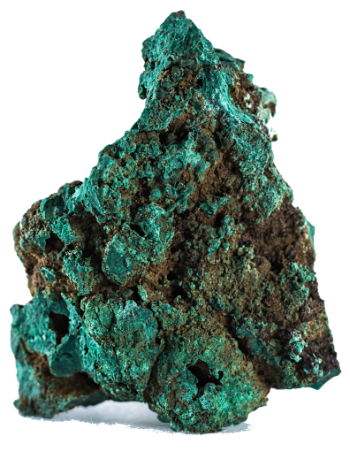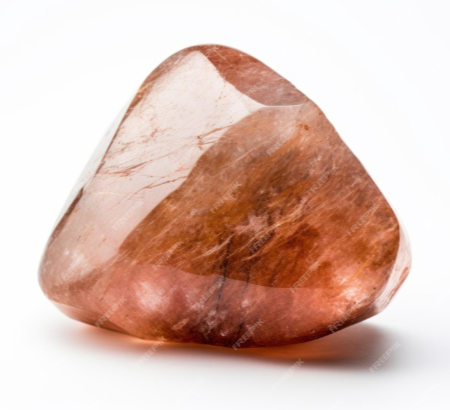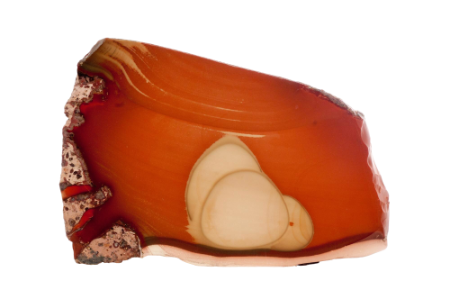
Malachite is a beautiful decorative stone. Its rich, patterned coloration in shades of green is unique among gems. Malachite’s low hardness makes it easy to work, though it still takes a polish very well. These qualities, combined with ready availability, make malachite a popular choice for lapidary artistry.
Malachite is abundant in its typical forms, so even the best specimens are modestly priced. Pieces showing an unusual crystal habit, distinctive pattern, or chatoyancy will have higher values. Rocks consisting of malachite and other colorful copper minerals in lovely combinations generally command higher prices than pure malachites. The value of carvings and ornamental objects hinges primarily on the size and artistry of the work.

How Does Malachite Get Its Color?
This vivid green gem gets its color from copper. Invariably associated with copper ore deposits, malachite ranks as a minor copper ore, with 58% copper content. Its recovery generally occurs, at least on a large scale, as a sidelight of copper mining.

How Does Malachite Get Its Patterns?
Malachite’s characteristic swirling and concentric band patterns are a result of its formation process. Technically, malachite is usually a “secondary mineral.” It is created by a chemical reaction between minerals that have already formed. This happens rather than by a simple one-step process. Malachite may form in two ways. It can form when water containing carbon dioxide or dissolved carbonate minerals interacts with preexisting copper-containing rocks. Alternatively, it forms when solutions containing dissolved copper minerals interact with carbonate rocks. Malachite’s swirls and bands show the changing solutions necessary for its formation. They reflect the waxing and waning of these solutions and the variations in their chemical content.

Does Malachite Make a Good Jewelry Stone?
Since malachite has a Mohs hardness of just 3.5 to 4.5, a somewhat brittle tenacity, and sensitivity to both heat and acids, it requires special care as a jewelry stone. Consider using protective settings for this gem in rings, bracelets, or other jewelry. These items may receive rough treatment or constant wear. On the other hand, wearing it in earrings, brooches, pendants, and tie pins should pose no special problems.
Although soft, malachites can take a polish very well. This has made them a popular choice for cabochons and beads as well as objets d’art. Lapidary artists use this stone extensively to make boxes, inlays, and carvings of all kinds. With great care, skilled artists can even turn malachite on a lathe to create goblets and candlesticks. (1)
Sources
(1) International Gem Society
(2) Freepik
In My Shop
Elegant Green Malachite Bracelets
These Elegant Green Malachite Bracelets are composed of Natural Green Malachite Stone Beads with gold-plated spacer beads and stretch cord










